How To Hem Sheer Fabric Without A Rolled Hem Foot
If you’re looking for a way to hem delicate fabric, you’ve come to the right place! In this tutorial, I’ll show you how to hem sheer fabric quickly and easily. With just a few simple steps, you’ll be able to finish your project in no time. So let’s get started!
How To Hem Sheer Fabric

Lightweight fabrics are so beautiful to use in your sewing projects but sewing sheer fabric can be a pain to hem. In this simple tutorial you’ll learn how to hem sheer fabric like a pro!
I love using sheer and lightweight fabrics in my projects! They’re so pretty and add dimension and volume to any garment. But they honestly were a pain to handle when hemming until I learned a very simple technique on how to hem sheer fabric.
There are other ways to hem these type of fabrics, that’s the beauty of sewing, so much variety! But my preferred method on hemming sheer fabric is probably the easiest one. And who doesn’t like easy? And the end result is such a pretty, narrow hem that looks nice and professional, a great and clean way to finish raw edges on sheers.
Lightweight, sheer fabrics such as crepe, batiste, chiffon or voile are used for creating delicate garments or curtains, blouses, wedding veils etc With this simple, easy and fast method on how to hem sheer fabric you can now incorporate these type of fabrics in more of your sewing projects!
Similar posts you might like:
- How to sew a rolled hem
- Lettuce hem tutorial
- Tips for sewing organza
- French seam tutorial
- DY infinity scarf
- How to sew concave and convex curves
What does it mean when a fabric is sheer?
The term “sheer” is generally used to describe a fabric that is see-through. It can be made from different types of fibers such as silk, cotton, or synthetics (nylon, polyester) and the thread count (the number of threads per square inch) is usually high.
This is why when you want to sew a garment made out of sheer fabric, you need to be extra careful and use a special technique for hemming. If you don’t, the raw edges of the fabric will fray and the hem will not look neat and professional.
What type of fabrics are considered sheer?
Lightweight fabrics such as crepe, batiste, chiffon, georgette, organza, tulle or voile are considered transparent fabrics. These types of sheer materials are often used for creating delicate garments, curtains/draperies, blouses, wedding veils, to make a bed canopy or to decorate home décor items etc.
What fabric is most see through?
The most see-through type of fabric is generally considered to be chiffon. It is made from silk, cotton, or synthetics (nylon, polyester) and the thread count (the number of threads per square inch) is usually high.
What is sheer fabric used for?
Lightweight fabrics such as crepe, batiste, chiffon or voile are often used for creating delicate garments or curtains, blouses, lingerie, nightwear, wedding veils and wedding gowns etc

Is sheer fabric difficult to sew?
Lightweight, sheer fabrics can be a little difficult to sew because they are delicate and slippery. However, with a few simple tips and the right tools, you’ll be able to sew thin fabric like a pro!
What needle do you use for sheer fabric?
When sewing sheer fabric, you will need to use a sharp needle. I recommend using a size 80/12 needle.
What thread should I use for sheer fabric?
For sewing lightweight, sheer fabrics you will need to use a thread that is as fine as the fabric. A general rule of thumb is that the lower the thread count, the thicker the thread. So if you’re using a delicate fabric with a high thread count, you will need to use a thinner thread.
What is the best stitch for sheer fabric?
For sewing lightweight, sheer fabrics you will need to use a straight stitch or a very narrow zigzag stitch. I do not recommend using a wide zigzag stitch as it can cause the fabric to pucker.
Do you need to interface sheer fabric?
No, you do not need to interface sheer fabric. However interfacing the hem area with a lightweight fusible interfacing will give the fabric more stability and durability and prevent it from stretching out of shape.
What tension for sheer fabric?
When sewing lightweight, sheer fabrics you will need to use a lower tension. I recommend testing the settings on your machine first, starting with the lowest tension setting and then increasing it until the stitches look good.
How do you stabilize sheer fabric?
There are a few different ways that you can stabilize lightweight, sheer fabrics:
- Use wonder tape or double sided tape on the wrong side of the fabric to hold it in place while you sew.
- Use small straight pins to pin the fabric to the stabilizer.
- Use spray adhesive to temporarily adhere the fabric to the stabilizer.
Does a serger do the tiny hems on sheer fabric?
No, a serger will not do the tiny hems on sheer fabric. A serger is a great tool for finishing the edges of fabric, but it does not do well with delicate fabrics.
Why would I want to hem sheer fabric?
Hemming sheer fabric can produce a clean and professional looking finish to any garment. It can also help to prevent the fabric from fraying or unraveling over time.
What’s the best way to hem sheer fabric?
The best way to hem sheer fabric is by using a simple and easy technique that produces a clean and professional looking finish.
There are a few different ways that you can hem sheer fabric, but the method that I find to be the easiest is also the one that produces the best looking results. When you’re working with such delicate and beautiful fabrics, you want your finished product to look as professional and polished as possible, and this technique will help you achieve that. In the tutorial below I’ll be showing you the steps needed to create that perfect finish.
What are some other ways to hem sheer fabric?
Some other ways to hem sheer fabric include using bias tape or bias binding, hand-sewing a rolled hem, or using fusible webbing.
How to hem sheer fabric without sewing?
If you’re looking for a way to hem sheer fabric without sewing, one option is to use fusible webbing. This is a type of adhesive that can be used to adhere two pieces of fabric together. It’s a great option if you’re looking for a quick and easy way to hem your fabric without having to sew it.
Another option for how to hem sheer fabric without sewing is to use bias tape or bias binding. This is a strip of fabric that can be used to finish the raw edge of your fabric. It’s a great option if you’re looking for a clean and professional looking finish.
Finally, another option for how to hem sheer fabric without a sewing machine is to hand-sew a rolled hem. This is a type of hem that’s created by folding the fabric over on itself and then sewing it down. It’s a great option if you’re looking for a quick and easy way to hem your fabric without having to sew it.
Can sheer fabric be dyed?
Yes, sheer fabric can be dyed. However, you will need to use a dye that is specifically made for synthetic fabrics.
Can you iron sheer fabric?
Yes, you can iron sheer fabric. However, you will need to use a low heat setting and be careful not to scorch the fabric.
Tips for hemming sheer fabric
- Use a sharp pair of scissors or rotary cutter to avoid fraying
- When cutting, be sure to leave enough fabric at the hem allowance so that you can stitch it down securely
- Use a sharp sewing needle for best results
- Use a presser foot that can accommodate delicate fabrics
- Use tissue paper or another type of stabilizer under the fabric to prevent it from shifting while you’re sewing.
- When pressing, use a press cloth to avoid damaging the fabric
- Be sure to take your time and go slowly when sewing to avoid making mistakes
Now that you know all about how to hem sheer fabric, why not put your new skills to the test and incorporate some of these beautiful fabrics into your next sewing project? You might just be surprised at how easy it is to work with them once you know the right techniques.
Hemming Sheer Fabric
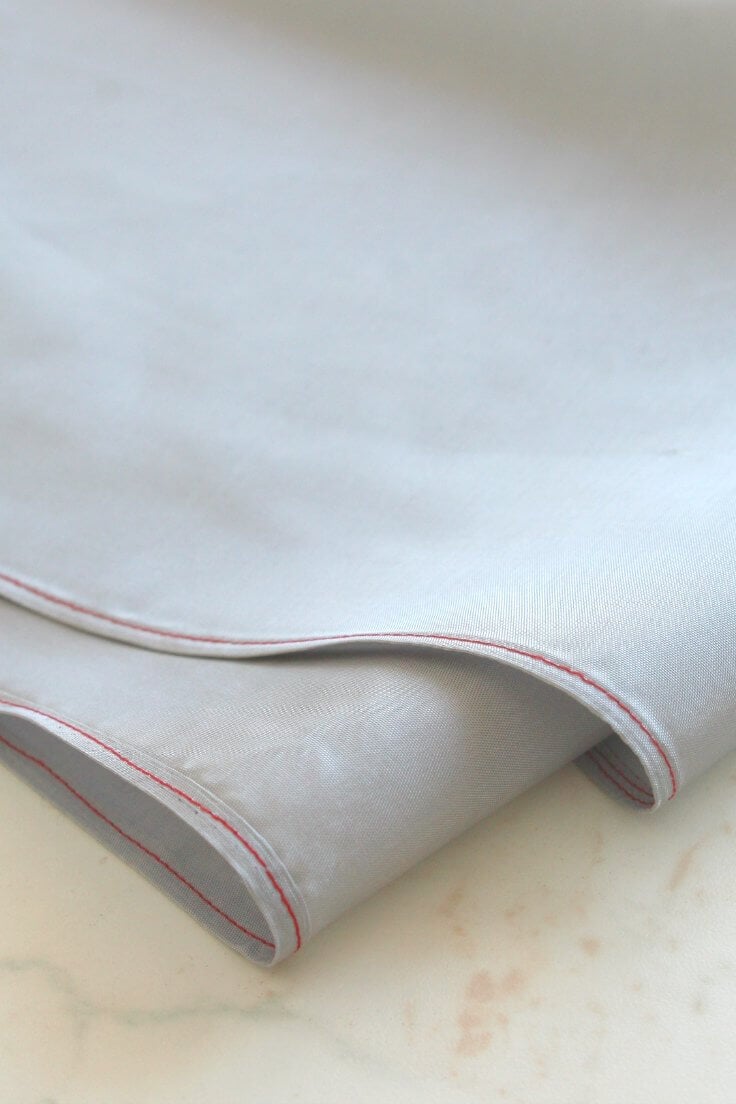
The tools you need to hem sheer fabric
- lightweight or sheer fabric
- sharp needle (I used a 70/10 one for my fabric)
- medium thickness cotton thread
- scissors
- pressing iron, on steam
The method for hemming sheer fabric
- Run a basting stitch (temporary stitch) about 1/4″ from the raw edge or from where you want your final hem to be.
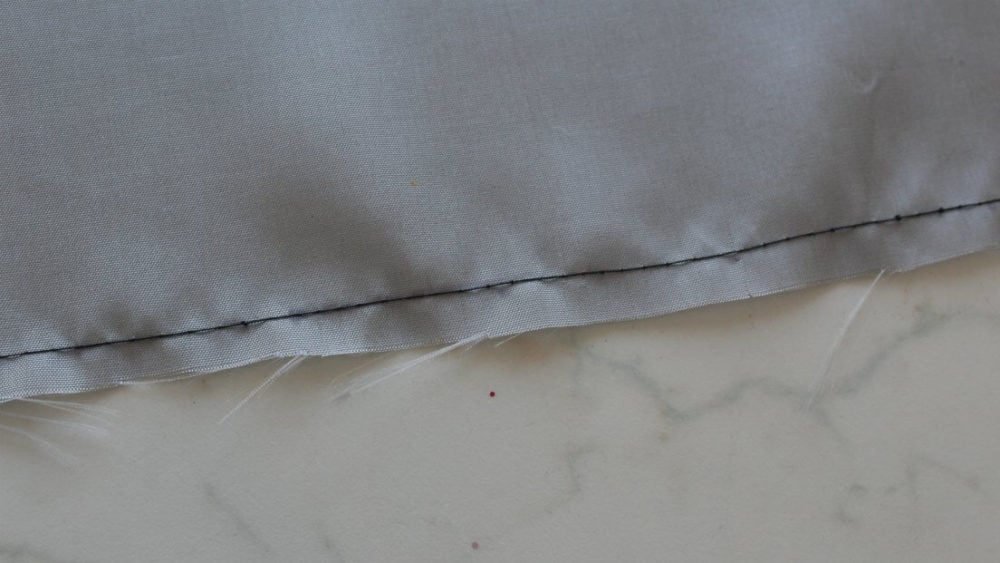
- Using that line of stitching, fold and press the raw edge up using your pressing iron on steam.
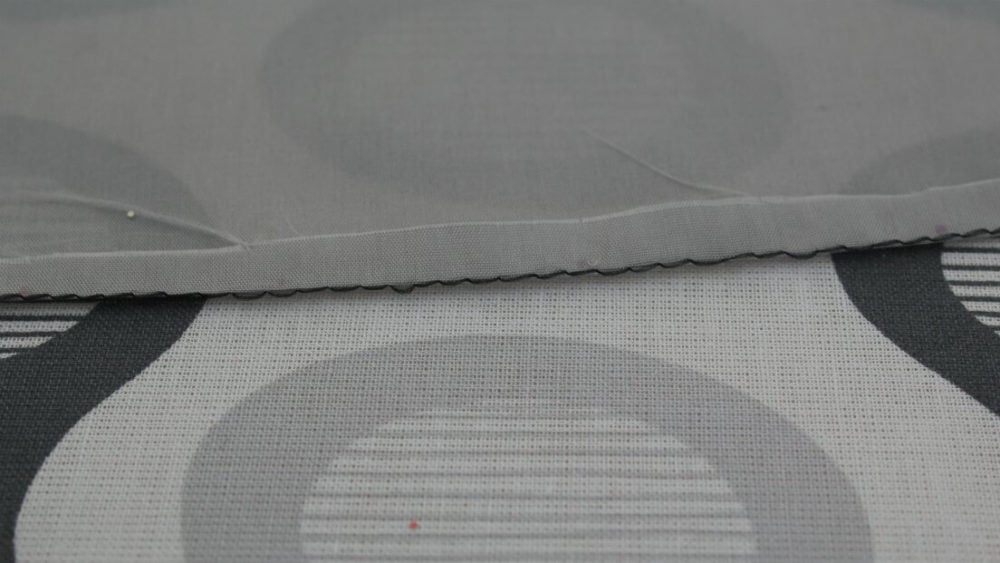
- Run another basting stitch at about 1/8″ from the folded edge.
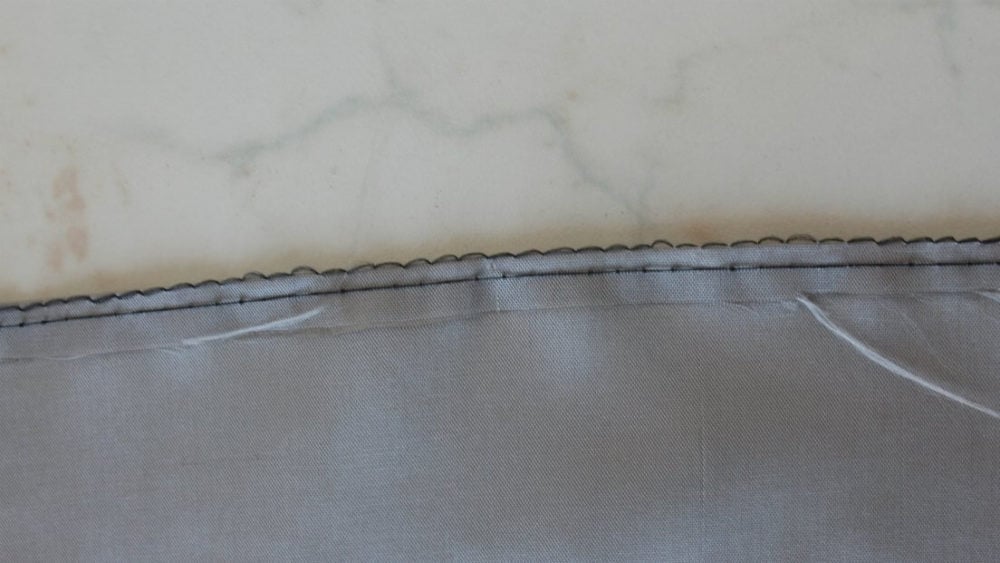
- Use a pair of scissors to trim the raw edge away, very close to your second line of stitching.
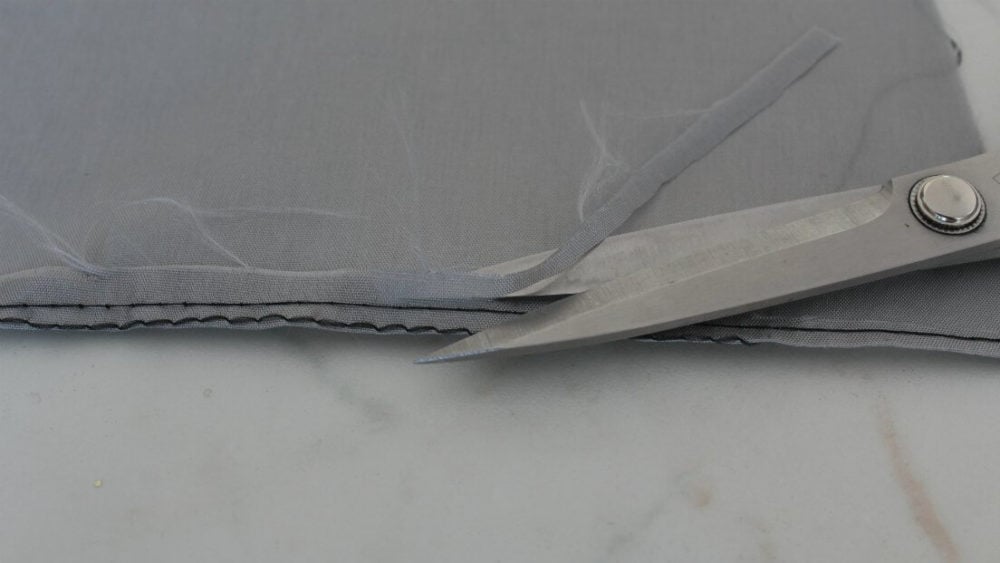
- Fold again to enclose the stitched-down raw edge, and press.
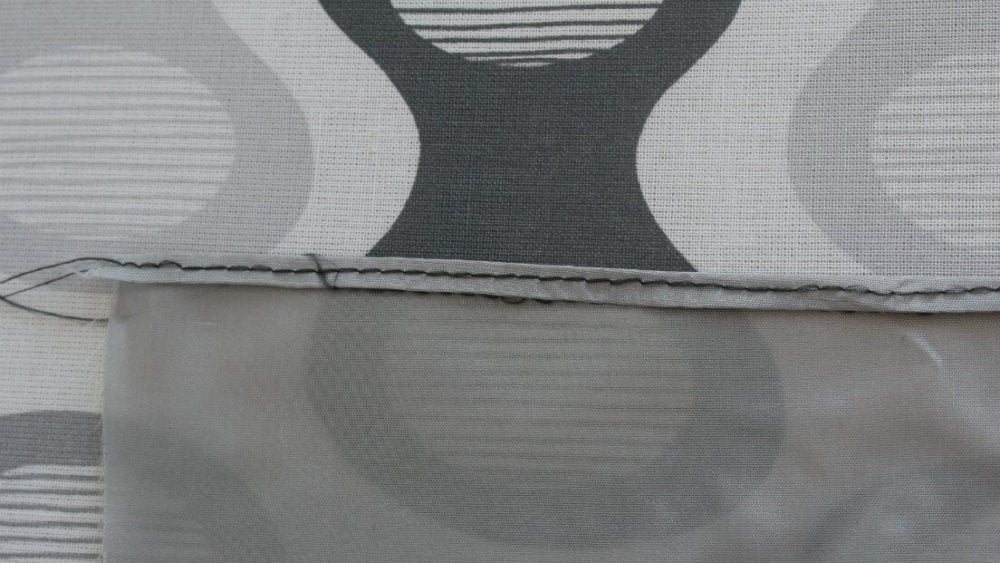
- Now use a regular stitch length to stitch very close to the inside fold as your final line of stitching.
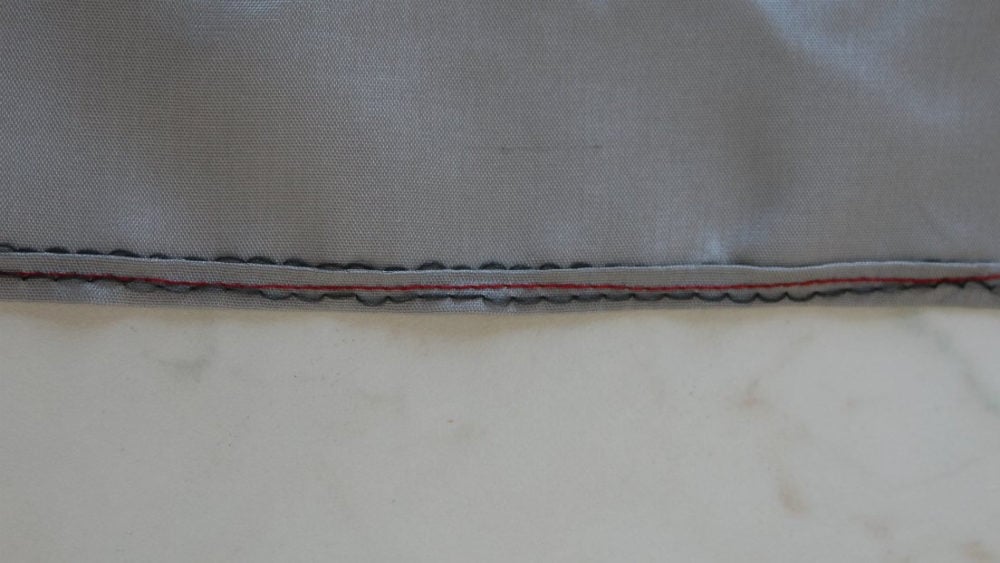
- Remove any basting stitches that might show and press once more.
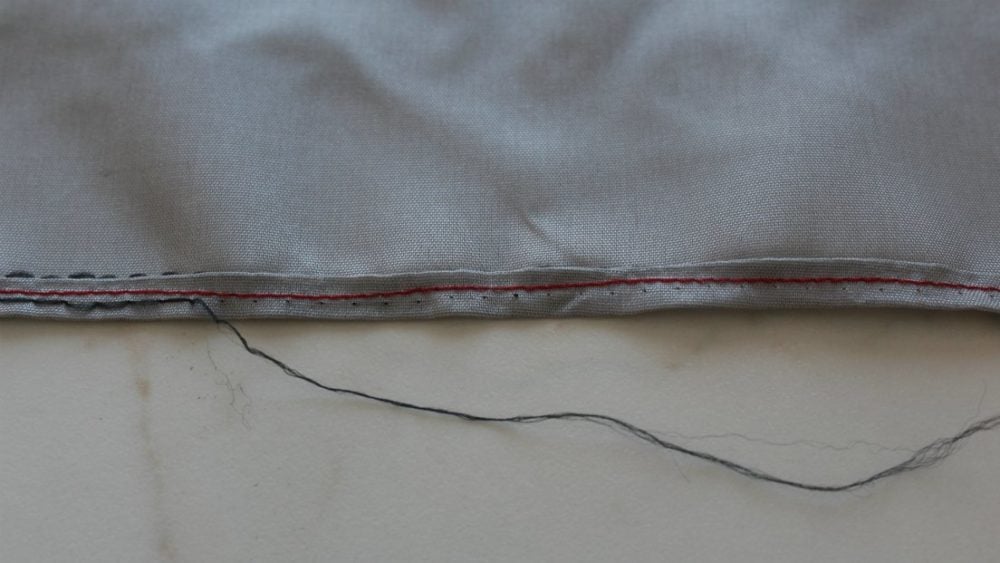
- And your pretty, delicate hem is done!

There you have it! Now you know how to hem sheer fabric like a pro. With this simple and easy technique, you’ll be able to create beautiful and professional looking garments that will last. So go ahead and put your new skills to the test on your next sewing project!
If you want more sewing tips and tricks, be sure to sign up for my email list where I send out weekly sewing tips and tutorials. Happy sewing!
Pin to save for later
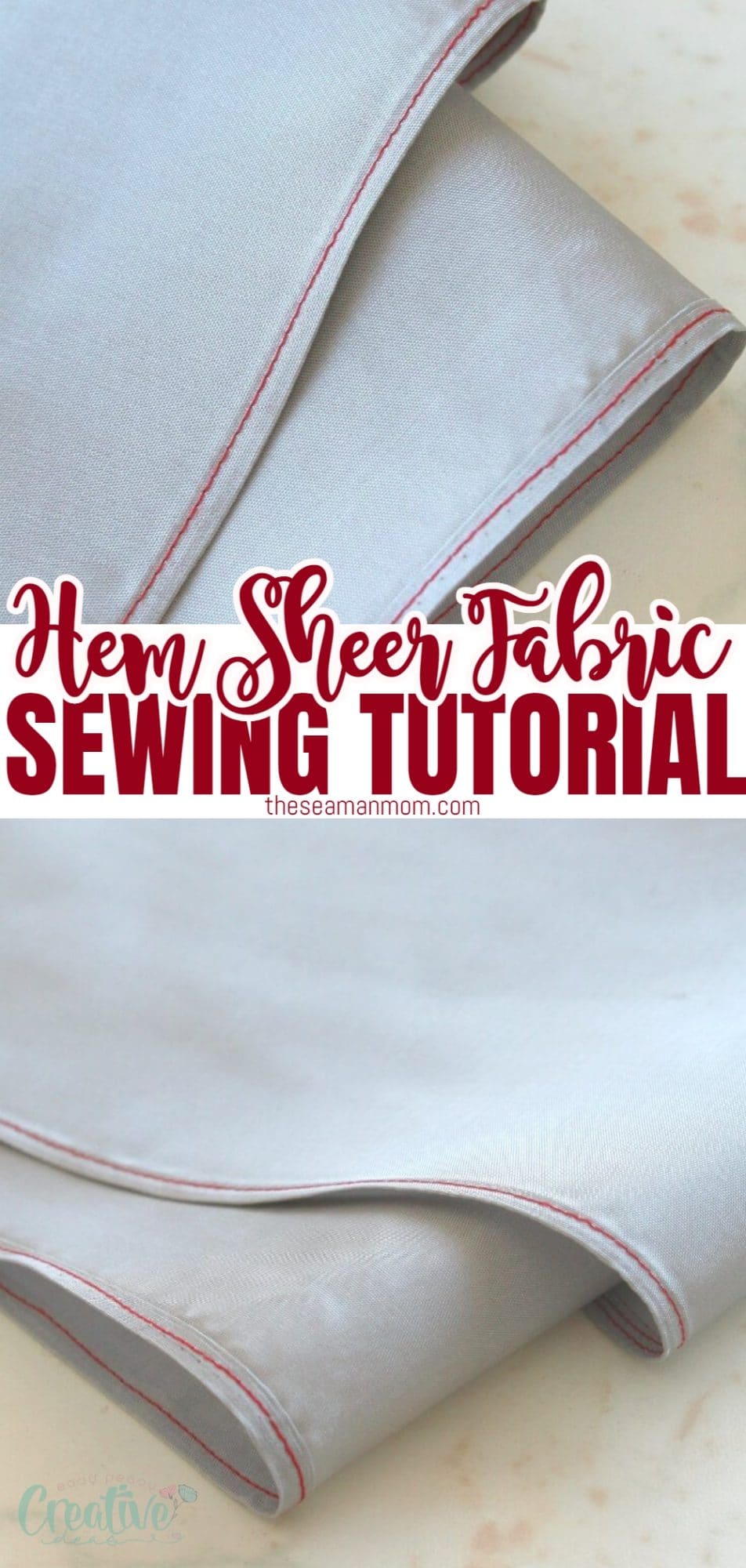
Most popular sewing projects:
- Tips for sewing a round hem
- Corded bag handles
- Flutter sleeve dress pattern
- How to laminate cotton fabric
Article may contain Amazon & affiliate links. As an Amazon Associate I earn from qualifying purchases at no additional cost to you.


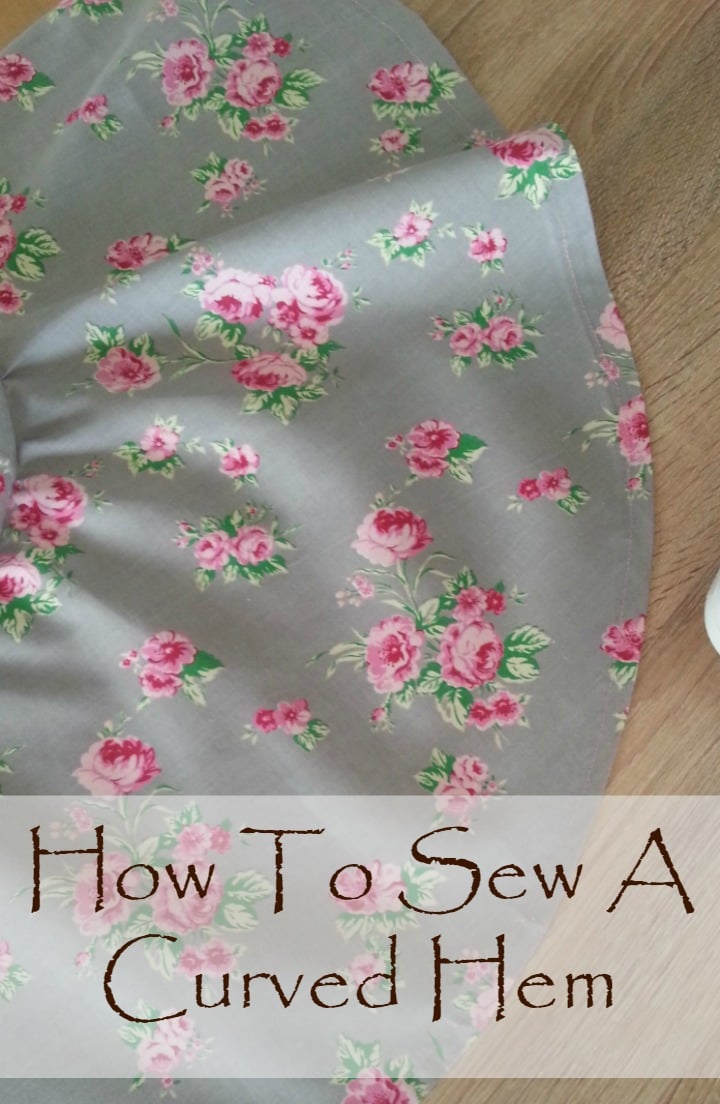
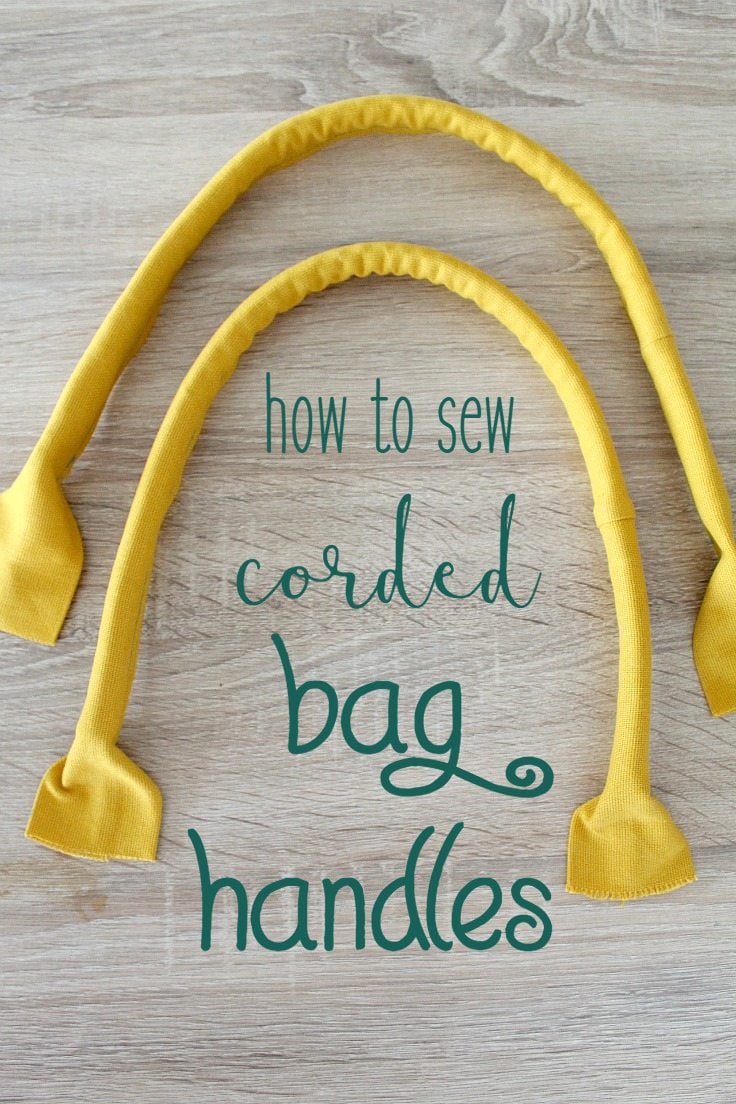
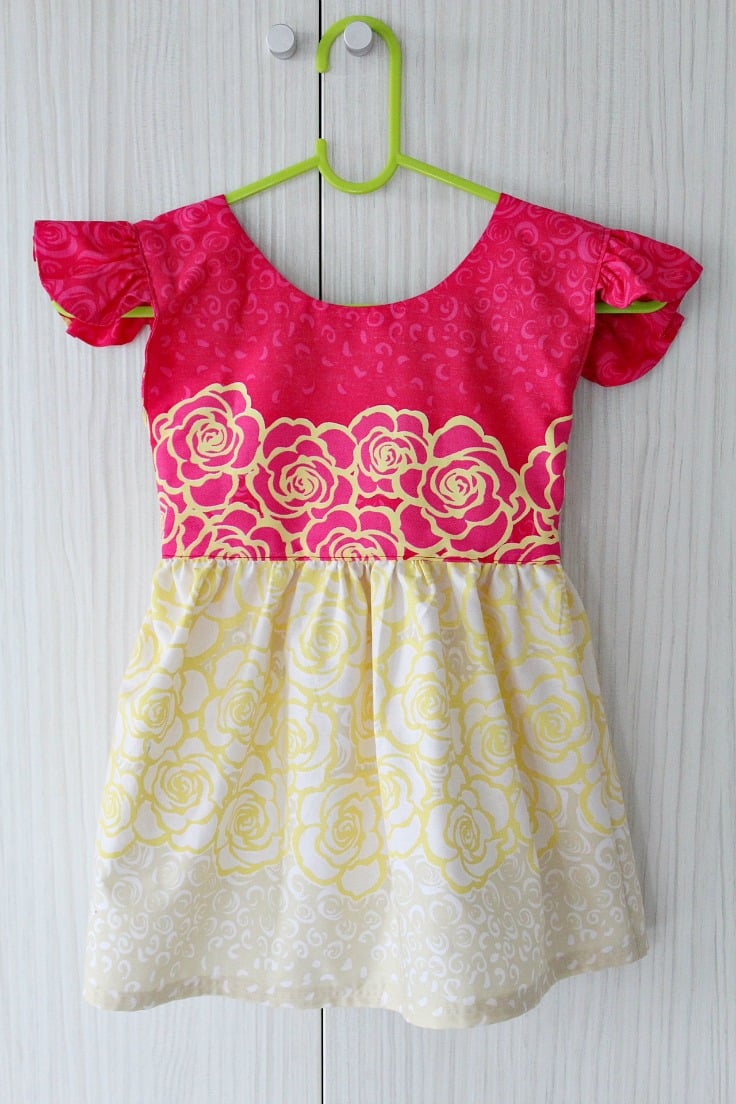


I love all of your help with different sewing patterns, such as different ways to hem, zippers, pleating, etc. I am not really good at sewing so I really appreciate all of your assistance…also I am really poor so all the free advice and patterns are really a God send!!! Thank you so very much!!
Hi, Penny! Thanks so much for your lovely comment! So happy my tutorials are of help to you!